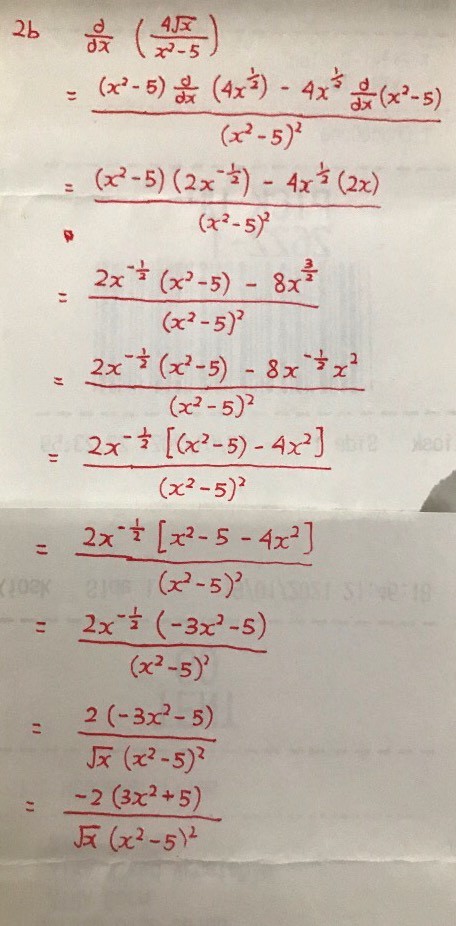Eric Nicholas K's answer to LockB's Secondary 4 A Maths Singapore question.
done
{{ upvoteCount }} Upvotes
clear
{{ downvoteCount * -1 }} Downvotes
Q2b
Similarly, you must practise on extracting of common terms in factorisation.
Similarly, you must practise on extracting of common terms in factorisation.
Date Posted:
3 years ago
why cant we just factorise x^-1/2 out and cancel (3+x) tho... thats what i did but i got the answer wrong
You mean for Q2a (my other working)?
Remember that we need to divide both the terms in the numerator by (3 + x) if we wish to cancel the (3 + x).
I prefer to leave it undivided as our answers are best left behind in a single fraction.
I prefer to leave it undivided as our answers are best left behind in a single fraction.
yep, just realised i commented on the wrong answer
we cant just do the normal cancellation of common terms? why do we need to divide the other terms at the numerator with (3+x) if we wish to cancel tho
we cant just do the normal cancellation of common terms? why do we need to divide the other terms at the numerator with (3+x) if we wish to cancel tho
Imagine you have 40 sweets and 24 balloons. You wish to divide these equally amongst 8 students. How many sweets and balloons will each student get?
Well, we can represent this as
(40 sweets + 24 balloons)
divided by 8.
We need to divide the 8 on both the 40 sweets and the 24 balloons.
Similar idea applies for the expression in the question.
Well, we can represent this as
(40 sweets + 24 balloons)
divided by 8.
We need to divide the 8 on both the 40 sweets and the 24 balloons.
Similar idea applies for the expression in the question.
how about factorising (x^1/2) to change the power of x^1/2 into x^1, i did that and got another answer instead...
You must rewrite x^1/2 as the product of x^-1/2 and x^1, because 1/2 = -1/2 + 1
ohh, btw if we want to bring the half down we have to make sure the half is factorised out from all the terms in the numerator? i did it without introducing 1/2 and 2 to x^-1/2...
You need to ensure that expressions are factorised out first before you can do direct division.



